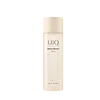What's inside
What's inside
 Key Ingredients
Key Ingredients

 Benefits
Benefits

 Concerns
Concerns

 Ingredients Side-by-side
Ingredients Side-by-side

Anastatica Hierochuntica Extract
AstringentWater
Skin Conditioning1,2-Hexanediol
Skin ConditioningButylene Glycol
HumectantGlycerin
HumectantDipotassium Glycyrrhizate
HumectantAmmonium Acryloyldimethyltaurate/Vp Copolymer
Disodium EDTA
Allantoin
Skin ConditioningCitric Acid
BufferingSodium Citrate
BufferingMalt Extract
Skin ProtectingAdansonia Digitata Seed Extract
Skin ConditioningAnthemis Nobilis Flower Extract
MaskingOpuntia Ficus-Indica Stem Extract
Skin ConditioningPortulaca Oleracea Extract
Skin ConditioningSodium Hyaluronate
HumectantHydroxypropyltrimonium Hyaluronate
Hydrolyzed Hyaluronic Acid
HumectantSodium Acetylated Hyaluronate
HumectantHyaluronic Acid
HumectantHydrolyzed Sodium Hyaluronate
Skin ConditioningSodium Hyaluronate Crosspolymer
HumectantPotassium Hyaluronate
Skin ConditioningAnastatica Hierochuntica Extract, Water, 1,2-Hexanediol, Butylene Glycol, Glycerin, Dipotassium Glycyrrhizate, Ammonium Acryloyldimethyltaurate/Vp Copolymer, Disodium EDTA, Allantoin, Citric Acid, Sodium Citrate, Malt Extract, Adansonia Digitata Seed Extract, Anthemis Nobilis Flower Extract, Opuntia Ficus-Indica Stem Extract, Portulaca Oleracea Extract, Sodium Hyaluronate, Hydroxypropyltrimonium Hyaluronate, Hydrolyzed Hyaluronic Acid, Sodium Acetylated Hyaluronate, Hyaluronic Acid, Hydrolyzed Sodium Hyaluronate, Sodium Hyaluronate Crosspolymer, Potassium Hyaluronate
Water
Skin ConditioningCutibacterium Avidum/Granulosum Ferment Extract Filtrate 24.4%
EmollientButylene Glycol
HumectantDipropylene Glycol
Humectant1,2-Hexanediol
Skin ConditioningNiacinamide
SmoothingCentella Asiatica Extract
CleansingUrea
BufferingLactic Acid
BufferingFicus Carica Fruit Extract
HumectantSucrose
HumectantUlmus Davidiana Root Extract
Skin ConditioningRubus Chamaemorus Seed Extract
Skin ConditioningHydrogenated Lecithin
EmulsifyingCeramide NP
Skin ConditioningXanthan Gum
EmulsifyingCitric Acid
BufferingFructan
Skin ConditioningProtease
ExfoliatingSodium Citrate
BufferingHydroxyacetophenone
AntioxidantEthylhexylglycerin
Skin ConditioningWater, Cutibacterium Avidum/Granulosum Ferment Extract Filtrate 24.4%, Butylene Glycol, Dipropylene Glycol, 1,2-Hexanediol, Niacinamide, Centella Asiatica Extract, Urea, Lactic Acid, Ficus Carica Fruit Extract, Sucrose, Ulmus Davidiana Root Extract, Rubus Chamaemorus Seed Extract, Hydrogenated Lecithin, Ceramide NP, Xanthan Gum, Citric Acid, Fructan, Protease, Sodium Citrate, Hydroxyacetophenone, Ethylhexylglycerin
Ingredients Explained
These ingredients are found in both products.
Ingredients higher up in an ingredient list are typically present in a larger amount.
1,2-Hexanediol is a synthetic liquid and another multi-functional powerhouse.
It is a:
- Humectant, drawing moisture into the skin
- Emollient, helping to soften skin
- Solvent, dispersing and stabilizing formulas
- Preservative booster, enhancing the antimicrobial activity of other preservatives
Butylene Glycol (or BG) is used within cosmetic products for a few different reasons:
Overall, Butylene Glycol is a safe and well-rounded ingredient that works well with other ingredients.
Though this ingredient works well with most skin types, some people with sensitive skin may experience a reaction such as allergic rashes, closed comedones, or itchiness.
Learn more about Butylene GlycolCitric Acid is an alpha hydroxy acid (AHA) naturally found in citrus fruits like oranges, lemons, and limes.
Like other AHAs, citric acid can exfoliate skin by breaking down the bonds that hold dead skin cells together. This helps reveal smoother and brighter skin underneath.
However, this exfoliating effect only happens at high concentrations (20%) which can be hard to find in cosmetic products.
Due to this, citric acid is usually included in small amounts as a pH adjuster. This helps keep products slightly more acidic and compatible with skin's natural pH.
In skincare formulas, citric acid can:
While it can provide some skin benefits, research shows lactic acid and glycolic acid are generally more effective and less irritating exfoliants.
Most citric acid used in skincare today is made by fermenting sugars (usually from molasses). This synthetic version is identical to the natural citrus form but easier to stabilize and use in formulations.
Read more about some other popular AHA's here:
Learn more about Citric AcidSodium Citrate is the sodium salts of citric acid. In skincare, it is used to alter pH levels and acts as a preservative.
Its main functions are to maintain the pH of a product and neutralize metal ions.
The acidity of our skin is maintained by our glands and skin biome; normal pH level of skin is slightly acidic (~4.75-5.5).
Being slightly acidic allows our skin to create an "acid mantle". This acid mantle is a thin barrier that protects our skin from bacteria and contaminants.
Learn more about Sodium CitrateWater. It's the most common cosmetic ingredient of all. You'll usually see it at the top of ingredient lists, meaning that it makes up the largest part of the product.
So why is it so popular? Water most often acts as a solvent - this means that it helps dissolve other ingredients into the formulation.
You'll also recognize water as that liquid we all need to stay alive. If you see this, drink a glass of water. Stay hydrated!
Learn more about Water